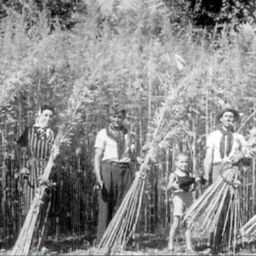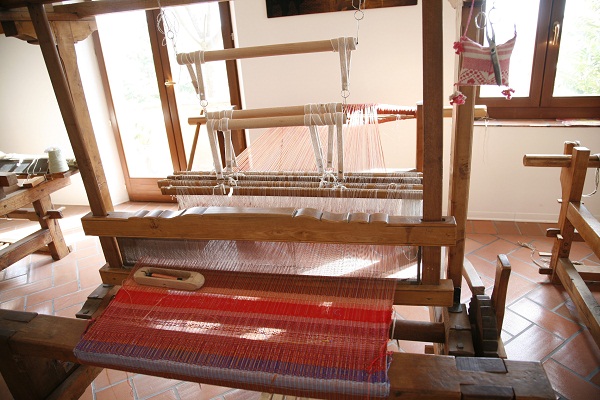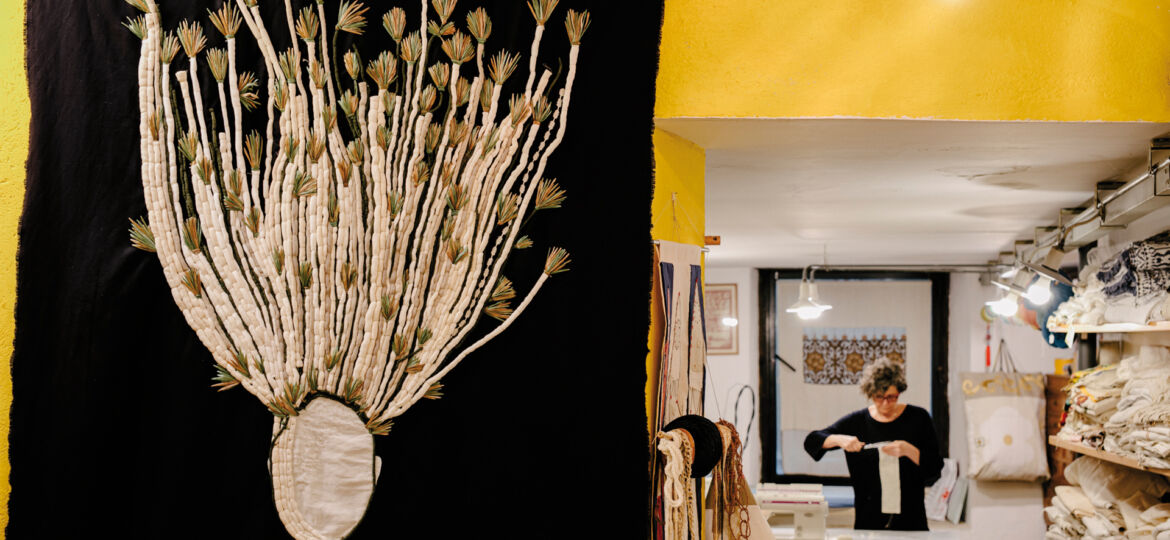
La Congrega – Second Hand Made is a textile arts workshop where furnishing and utility artifacts are designed and made through creative recovery and reinvention, moving between cultures, peoples and customs.
It is a contemporary production of functional and original textile objects, which often stems from reinterpreting textiles and their uses, with an extraordinary ability to harmonize old and new and “tell with thread.”
The basic fabrics are. all natural, in linen, cotton, hemp (silk and wool for tapestries) and are also made in different colors using ancient processes of natural dye, such as the rediscovered and very interesting one related to the ford, a dyeing plant used since ancient times to obtain a particular shade of blue, the same shade found in Piero della Francesca’s paintings.
The newly manufactured fabrics used by La Congrega for its creations are produced by the historic firm Sironi (Gallarate – MI). They are made on ancient looms and retain the designations of their origins, such as sovereign cloth, medieval cloth, Venice reinforcement.
The workshop also uses old natural fabrics made on manual looms of which the Marche countryside was rich: each farmhouse had its own loom, to produce linen or hemp cloths for brides’ trousseaus. Stored in trunks and attics, many of these fabric rolls still resurface in homes: carefully treated, they regain their beauty and lend themselves to a variety of uses and reuses.
At La Congrega, textiles meet from time to time with old receipts and lace, which carry with them enchanting traces of traditional craftsmanship, or even with simple fabric scraps that “sleep in drawers.” For a new and unique result every time.
What is astonishing is the infinite inventiveness of Valeria David, for more than 40 years the representative face of La Congrega and the textile industry in the Marche region, and Emanuela Micucci, the contemporary creative soul of the production who has been with her for many years in this adventure.
Their creativity feeds on recovery, rebirth, reuse, resulting in totally new artifacts that live on their own life and their own original narrative.
Stories of local craft traditions, rural life and domestic weaving at the loom resurface from the textiles, joining today with all that can be traced and evoked with the thread, in a continuous cultural and temporal exchange.
“Textiles is a language and it allows us to tell many stories,” Valeria David says passionately.
Hers is “a contemporary production that appeals to everyone, including young people,” as she calls it. And in the years of widespread storytelling, it leads to the discovery of a new way of telling and retelling, which is after all a natural human need, inherent in the very organization of thought and language.
It all adds up if we think about How much in textiles is assimilated to the language and structure of storytelling: the presence of a plot, the intersection of warp and weft, inspiration and exchange between multiple cultures, bringing together creativity and technique, universal knowledge and personal thoughts, resulting in something beautiful, which someone will want to “read,” interpret and understand.
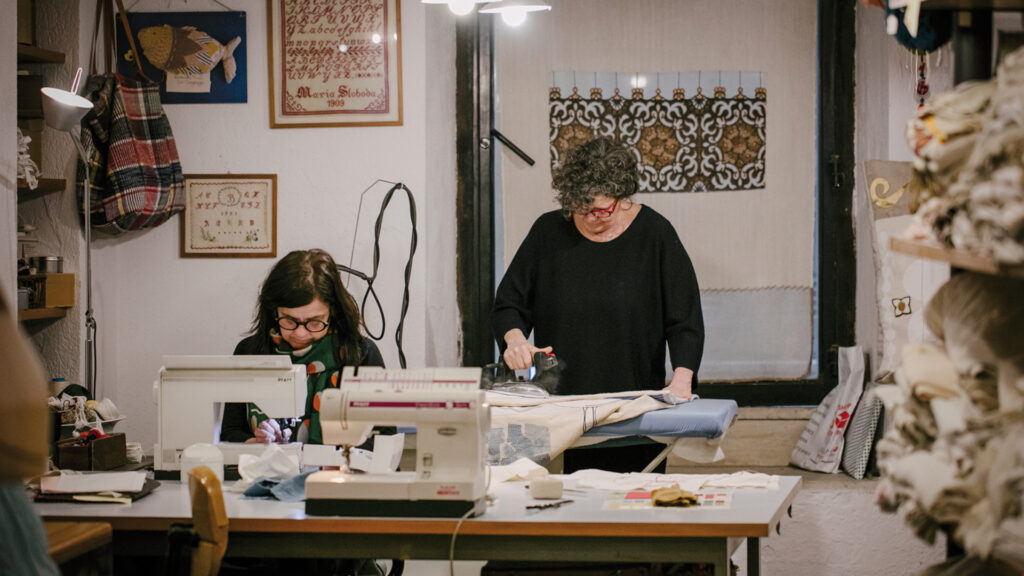
At La Congrega atelier on Orefici Street in the historic center of Ancona, furniture items are made that speak of very specific stories, related to the identity of the person who made them, the history of the salvaged elements, and the needs of those who require a particular custom job.
In fact, La Congrega also works on commission, and makes not only custom-made products, beautiful pillows, bedspreads, curtains, and tablecloths, but especially products tailored to each person’s personal narrative.
This is how the furnishing tapestries were born, artifacts in which the natural inclination of the workshop and its working group, toward fusion, the mixing of cultures, time references, stories, thoughts and colors, is realized.
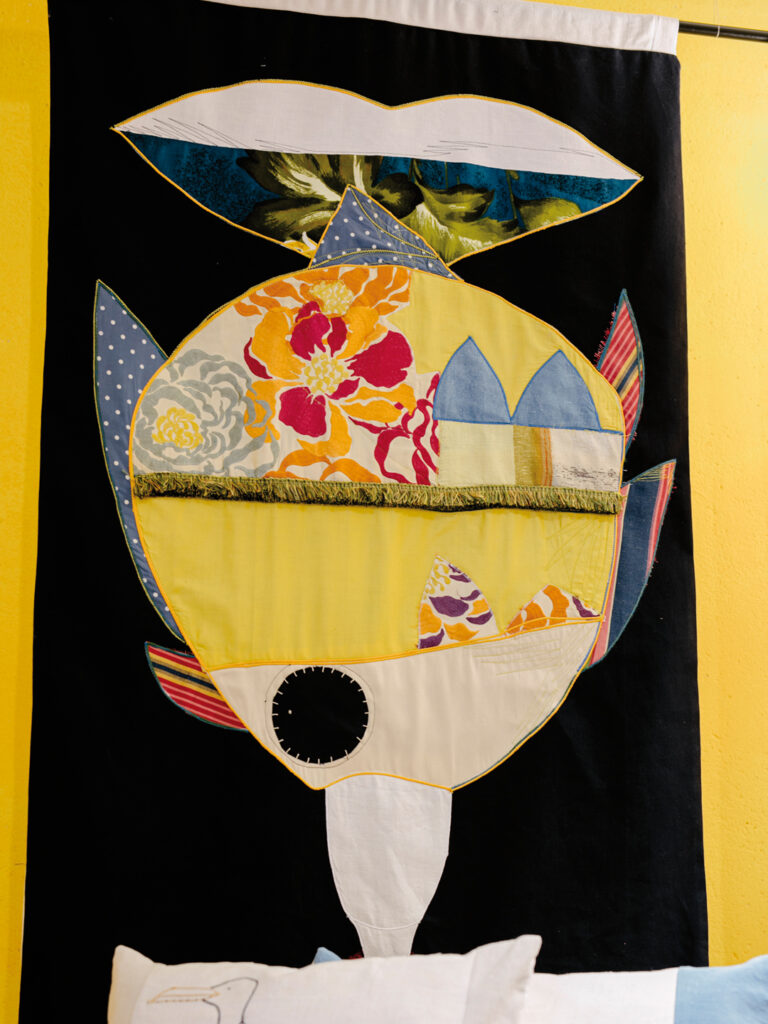
La Congrega also experiments in the field of excellent tourism products, describing views of Ancona and tracing sketches and city panoramas on natural fabrics with thread.
This is the essence of the laboratory, which moves between contemporary textile production, creative recovery, work of research Of clothing and textiles, promotion of the territory and its art, organization of events, exhibitions and activities of training, gives the textile world its rich, multifaceted and defined identity, placed in a creative sphere dense with knowledge, formed over decades of experience.
Valeria David’s expertise as an artisan and researcher also spans the field of textile restoration.
Restoration is an activity in which the laboratory team is particularly engaged in patient interventions on artifacts of various periods and types.
Restoration projects are always drawn up on the basis ofcareful analysis of execution techniques and materials, and are marked by the criterion of reversibility.
They are carried out using proven materials, selected on the basis of their affinity with the original, and with full respect for the artifact on which work is being done and its historical context.
Important experiences of the laboratory in the field of restoration. Like the one related to the birth of the Crypt Museum in Monsampolo del Tronto, Piceno.
In fact, the textile workshop La Congrega oversaw all stages of the restoration of the clothes found along with the mummified bodies.
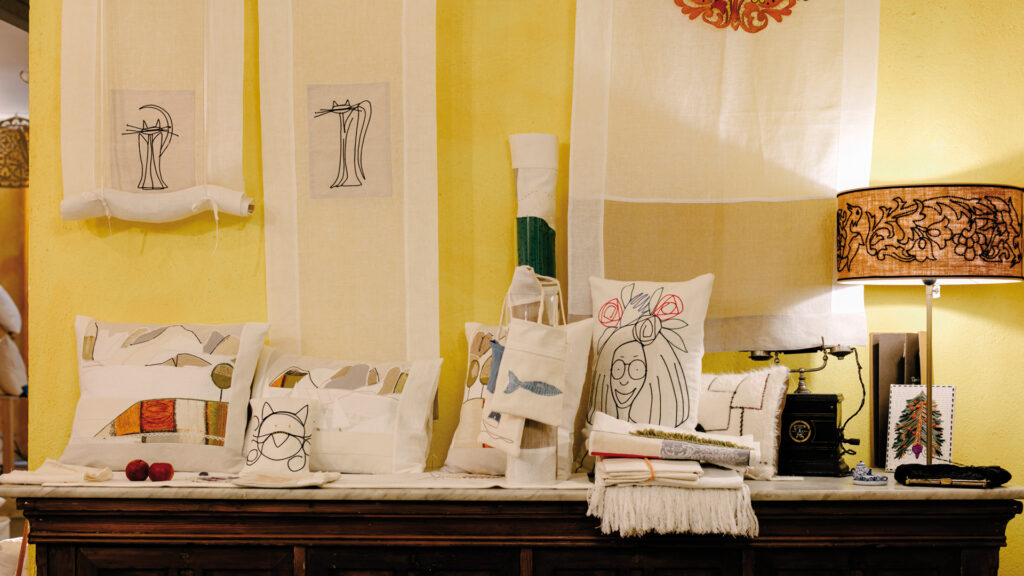
The Monsampolo Crypt Museum: the extraordinary conservation and restoration of the robes
During excavation work for the renovation of SS. Assunta Church in 2003 in Monsampolo del Tronto, as many as twenty mummies and clothes belonging to inhabitants of a small farming community in southern Marche, dating from a period between the late 18th and mid-19th centuries.
The robes were worn by the mummies and at the burial site that corresponds to the Chapel of the Good Death in the Church Crypt.
An exceptional find, both because of the spontaneous process of mummification of the bodies and the almost perfect preservation of the robes.
These are in fact clothes made of plant fibers, linen, hemp and broom, which usually decompose. In this case, special microclimatic conditions favored its preservation.
The Crypt Museum is the result of seven years of restoration work. Thus, since 2013, both the mummified bodies and, in separate showcases, the restored clothing can be seen in the church crypt. Richly pleated skirts, shirts adorned with precious embroidery and lace, red-striped men’s vests, tiny thread buttons: what was only witnessed through paintings of the time can now be enjoyed concretely.
Very interesting, for further study, the book The Last Robe , dedicated to the funerary clothing of the mummies of Monsampolo del Tronto.
The Textile Database
The Textile Database is another testimony to the great work of historical, cultural and costume reconstruction that La Congrega has carried out in its more than four decades of activity.
Important stories, the most diverse, curious and interesting are told by more than 3,000 textile artifacts from various eras – from the 18th century to the 1970s of the
Twentieth century-which constitute “the real collection,” the result of the meeting of European and non-European craft manufactures from the Mediterranean basin, and a representation of theevolution of taste and fashion.
These are garments, textiles, and furnishing artifacts. Some are finished objects of use, others are fragments made with a wide variety of production techniques, from embroidery to lace to weaving.
The fabric offers endless possibilities for cultural-historical analysis and investigation, which enables the decoding of customs, traditions, transitions and cultural fusions.
All the objects are cataloged by type and photographed, and it is thanks to this work of enormous cultural value that the La Congrega atelier is able to make the collected material usable and bring to life very interesting thematic exhibitions.
Year after year, exhibitions, events, and workshops feature textiles in so many forms and from so many angles: shirts, handbags, tapestries, “textile tattoos,” pleated textiles, knitted blankets, brocades and damasks, tassels and bindings, and “second-hand embroidery.”
It is in this and many other ways that La Congrega works on the dissemination of knowledge derived from thedaily experience of textile art.
The first and most decisive way has always been the same: train, teach, pass on. And that’s why the atelier led by Valeria David, Master Craftswoman, is also a creative workshop open to the dissemination of knowledge about textiles and therefore a Bottega Scuola, recognized by the Marche Region, and qualified to welcome trainees who want to embark on an important, direct and diversified path in textile craftsmanship.
Laura Ricci


